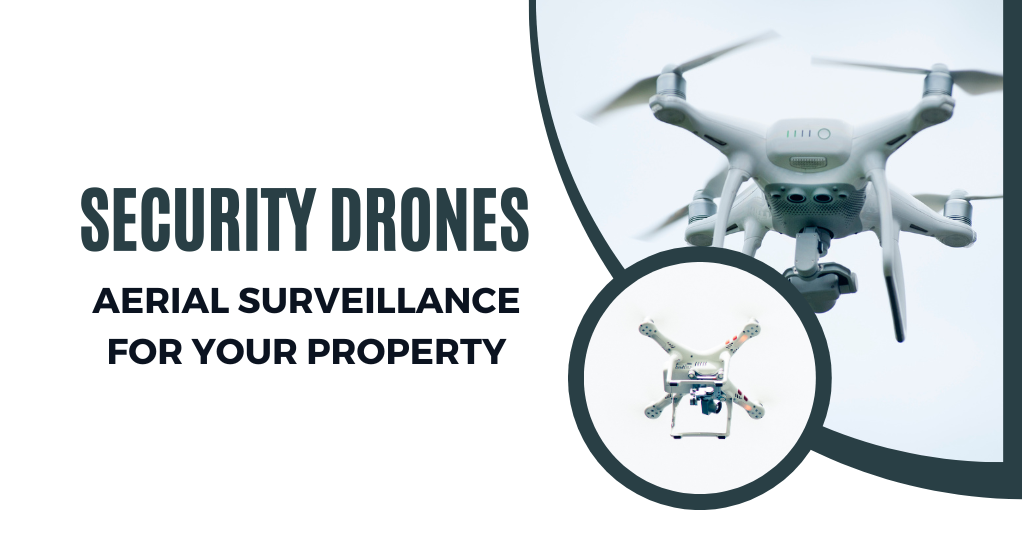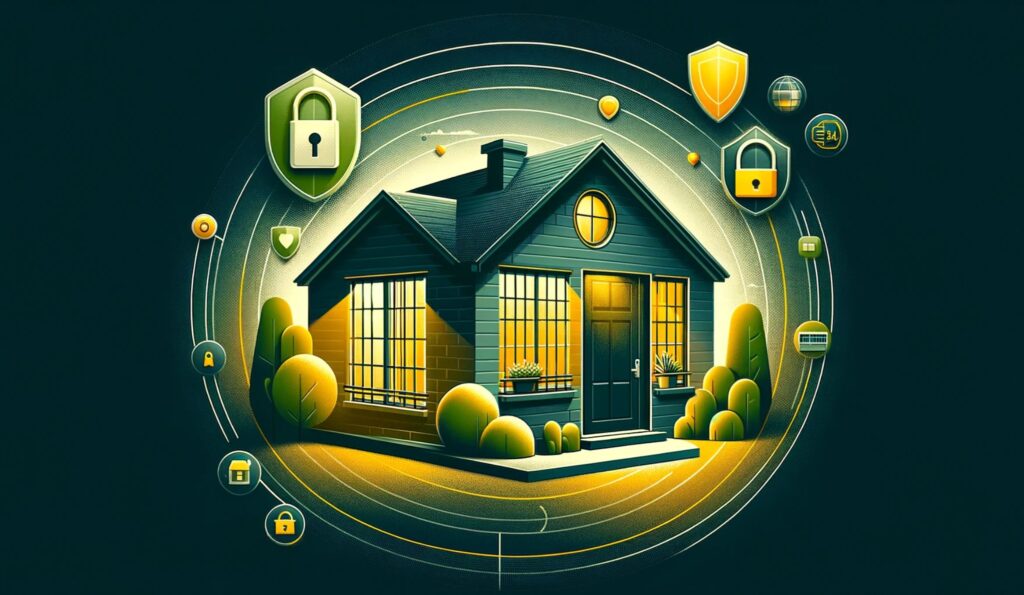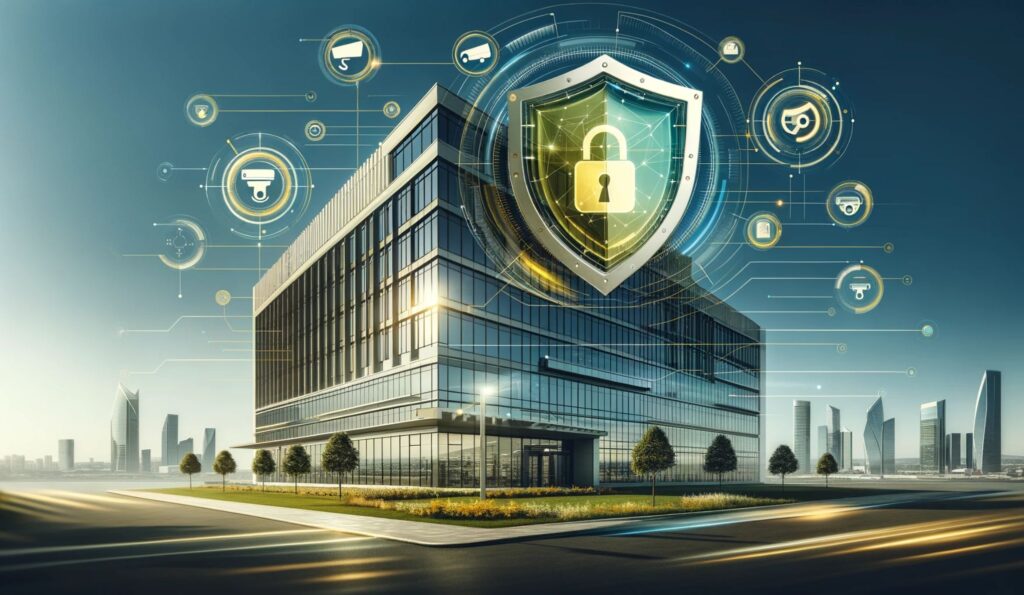In the realm of surveillance and security, the integration of technology has always been a driving force. From the rudimentary alarm systems of the past to the sophisticated CCTV networks of today, innovation has continually reshaped the landscape. Among the most transformative of these innovations is the rise of security drones. These unmanned aerial vehicles (UAVs) have ushered in a new era of aerial surveillance, offering unparalleled advantages in monitoring and protection.
A Brief History
The concept of using flying machines for surveillance isn’t new. In fact, the origins can be traced back to World War I when tethered balloons were used for reconnaissance. However, the modern iteration of these flying machines, especially drones, began to take shape in the latter half of the 20th century, primarily for military applications.
Over the years, as technology advanced, the size of drones reduced while their efficiency and capabilities increased. By the early 21st century, drones had made their way from exclusive military use to commercial and recreational applications. The drone market exploded, and with it came the potential for a myriad of uses, one of the most promising being security and surveillance.
The Rise of UAVs in Surveillance
The transition of drones from military to civilian use opened up a world of possibilities. Businesses began to see the potential of these devices in providing a bird’s-eye view of their properties, assets, and operations. The reasons for their rapid adoption in surveillance are manifold:
- Coverage: Drones can cover vast areas in a short span, making them ideal for monitoring large properties, borders, or events.
- Flexibility: Unlike fixed cameras, drones offer dynamic surveillance, adjusting angles and positions based on need.
- Cost-Effective: In comparison to manned aircraft like helicopters, drones are significantly cheaper to acquire and operate.
- Real-time Data: Equipped with live-feed cameras, drones provide real-time data, enabling swift decision-making in critical situations.
- Accessibility: Drones can reach areas that might be challenging or dangerous for humans, such as disaster sites or high-risk zones.
| Advantage | Description |
|---|---|
| Coverage | Monitor vast areas quickly. |
| Flexibility | Dynamic surveillance with adjustable angles. |
| Cost-Effectiveness | Cheaper than traditional manned aircraft. |
| Real-time Data | Live-feed cameras for immediate insights. |
| Accessibility | Access challenging or high-risk areas. |
Advantages of Aerial Surveillance
The shift towards aerial surveillance, particularly through the use of drones, has been nothing short of transformative for the security industry. This mode of surveillance offers a unique set of advantages that traditional methods simply cannot match. Let’s delve deeper into the distinct benefits of employing aerial surveillance.
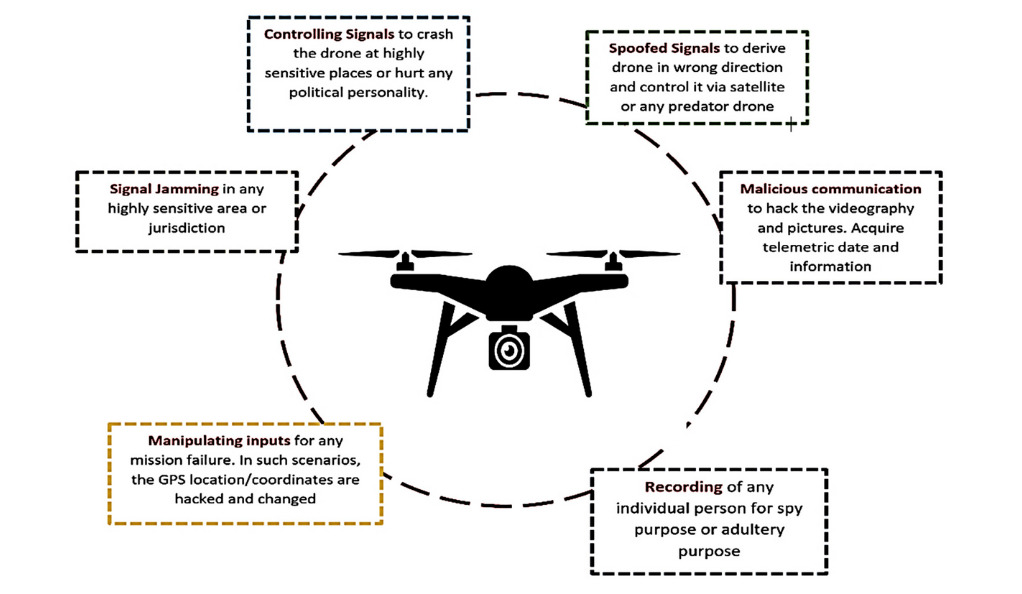
Vast Terrains Covered Efficiently
One of the primary advantages of drones is their ability to cover extensive areas in minimal time. Whether it’s a sprawling industrial complex, a vast agricultural field, or a large public event, drones can swiftly traverse these spaces, providing comprehensive coverage. This efficiency not only ensures thorough surveillance but also reduces the manpower and resources traditionally required for such extensive monitoring.
Democratization of Aerial Security
Before the advent of drones, aerial surveillance was a luxury reserved for large corporations or government entities, primarily because of the high costs associated with operating manned aircraft. Drones, with their affordability and ease of use, have democratized access to aerial surveillance. Today, even small businesses or individual property owners can deploy drones to monitor their assets, leveling the playing field.
Real-time Monitoring and Response
Drones equipped with real-time video feeds allow for instantaneous monitoring. This immediacy can be crucial during emergencies or security breaches, where every second counts. For instance, in the event of an unauthorized intrusion, a drone can be deployed to track the intruder’s movements, providing security teams with live updates and enabling them to respond more effectively.
Enhanced Night Surveillance
Modern security drones come equipped with infrared and thermal imaging cameras. These technologies allow drones to detect heat signatures, making them exceptionally effective during nighttime or in low-light conditions. Whether it’s tracking the movement of people or wildlife, drones can operate seamlessly, irrespective of the time of day.
Reduced Human Risk
Certain surveillance tasks can put human security personnel at risk, especially in hostile or hazardous environments. Drones eliminate this risk by accessing hard-to-reach or dangerous areas, ensuring safety while still obtaining the necessary data or footage.
Integration with Modern Tech
Drones can be integrated with other modern technologies such as artificial intelligence (AI) and machine learning. This integration allows for features like automatic threat detection, pattern recognition, and predictive analysis, further enhancing the capabilities of aerial surveillance.
Environmental Monitoring
Beyond security, drones also play a pivotal role in environmental monitoring. They can be used to detect changes in landscapes, monitor wildlife, or even track environmental hazards like oil spills or forest fires. This dual role of drones in both security and environmental surveillance showcases their versatility.
Types of Security Drones
The world of security drones is vast and varied, with each type designed to cater to specific needs and environments. Understanding the different types of drones available can help individuals and businesses make informed decisions about which UAV is best suited for their surveillance requirements.
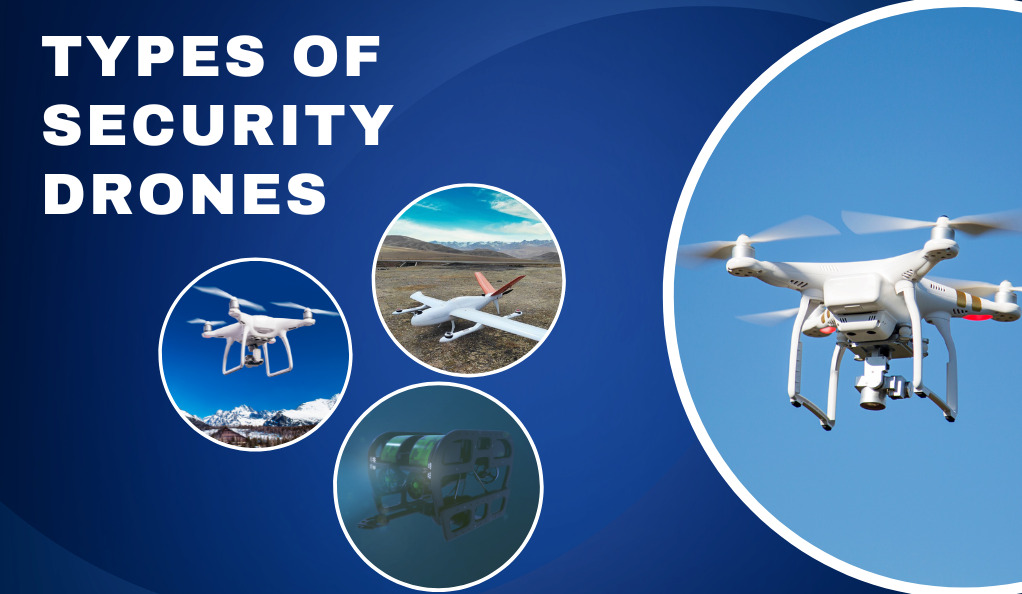
Fixed-Wing Models
Overview: These drones resemble small airplanes and are designed for long-duration flights. They are particularly effective for monitoring large areas due to their extended battery life and flight range.
Applications:
- Large-scale agricultural monitoring.
- Border patrol and surveillance.
- Environmental studies over vast terrains.
Advantages:
- Longer flight times compared to other drone types.
- Can cover extensive areas in a single flight.
- Generally faster than multi-rotor drones.
Quadcopters
Overview: Quadcopters, as the name suggests, have four rotors. They are the most common type of drone used for photography, videography, and surveillance due to their stability and maneuverability.
Applications:
- Real estate photography and videography.
- Event monitoring and security.
- Inspection of buildings and structures.
Advantages:
- Highly maneuverable and can hover in place.
- Can take off and land vertically, requiring minimal space.
- Wide range of sizes and capabilities available.
Sensing and Monitoring Equipment Variations
Drones can be equipped with a variety of sensors and monitoring equipment based on the specific requirements of the task at hand.
- Visual Cameras: Standard cameras that capture high-resolution images and videos. Ideal for general surveillance and photography.
- Thermal Cameras: Detect heat signatures, making them perfect for nighttime surveillance or locating individuals in dense areas.
- Lidar Sensors: Use laser pulses to map out terrains and structures in 3D. Essential for topographical surveys and forestry applications.
- Multispectral Sensors: Capture data across multiple wavelengths, often used in agriculture to monitor plant health.
Specialized Drones
Beyond the standard models, there are drones designed for specific tasks:
Underwater Drones: Designed for aquatic surveillance, these drones can monitor marine life, inspect underwater infrastructure, or assist in search and rescue operations.
Tethered Drones: These drones are physically connected to a base station, providing continuous power. They’re ideal for prolonged surveillance tasks where battery life might be a concern.
Nano Drones: Extremely small drones used for discrete surveillance. Their compact size allows them to operate without drawing attention.
Regulatory Landscape for Security Drones
Navigating the world of drones isn’t just about understanding their capabilities and applications; it’s also crucial to be aware of the regulatory framework that governs their use. As drones have become more prevalent in both recreational and commercial sectors, regulatory bodies worldwide have been working diligently to establish guidelines that ensure safe and responsible drone operations.
The Role of the FAA
In the United States, the Federal Aviation Administration (FAA) is the primary body responsible for regulating all aspects of civil aviation, including drones. Over the years, the FAA has introduced several regulations to ensure that drones are operated safely and do not pose a risk to manned aircraft or people on the ground.
Key FAA Regulations for Drones
- Part 107: This is the primary rule for non-recreational use of drones. It outlines the limitations and requirements for commercial drone operations, such as:
- Drones must weigh less than 55 pounds.
- They must remain within the operator’s line of sight.
- Drones cannot be flown over people or moving vehicles unless specific permissions are granted.
- Operations are limited to daylight hours.
- Registration: All drones used for commercial purposes must be registered with the FAA. This process helps authorities track and manage drone operations.
- Pilot Certification: Commercial drone pilots must obtain a Remote Pilot Certificate by passing an FAA-administered test. This ensures that pilots have the necessary knowledge to operate drones safely.
- No-Fly Zones: There are specific areas, such as near airports or government facilities, where drone flights are restricted or prohibited. The FAA provides tools like the B4UFLY app to help pilots identify these zones.
Challenges and Evolving Regulations
While the FAA has made significant strides in regulating drone operations, challenges remain. One of the primary concerns has been the integration of drones into the national airspace, ensuring they don’t interfere with manned aircraft operations. Additionally, as drone technology advances and their applications expand, the regulatory framework must evolve to accommodate these changes.
The FAA has been proactive in addressing these challenges. Initiatives like the Unmanned Aircraft System (UAS) Integration Pilot Program aim to pave the way for more advanced drone operations, such as flights over populated areas or beyond the operator’s line of sight.
Global Perspective
While the FAA governs drone operations in the U.S., many countries have their own regulatory bodies and rules. For instance:
- European Union: The European Union Aviation Safety Agency (EASA) oversees drone regulations in the EU, with a focus on risk-based rules.
- Canada: Transport Canada is responsible for drone regulations, emphasizing safety and privacy.
- Australia: The Civil Aviation Safety Authority (CASA) governs drone operations, with distinct rules for commercial and recreational use.
Practical Use Cases for Security Drones
The versatility of drones has led to their adoption in a myriad of sectors, each harnessing the unique capabilities of these aerial devices to address specific challenges. Let’s explore some of the most impactful and practical use cases for security drones across various industries.
| Use Case | Overview | Key Benefits |
|---|---|---|
| Infrastructure and Pipeline Monitoring | Monitor vast projects like pipelines and railways. | – Rapid Assessment<br>- Safety<br>- Detailed Imaging |
| Wildlife Management | Monitor animal populations, track migration, and prevent poaching. | – Non-Intrusive<br>- Data Collection<br>- Anti-Poaching |
| Event Security | Enhance security measures during large public events. | – Crowd Monitoring<br>- Quick Response<br>- Evidence Collection |
| Disaster Response | Aid in assessment and rescue operations post-natural disasters. | – Rapid Damage Assessment<br>- Locate Survivors<br>- Deliver Supplies |
| Mining Operations | Monitor expansive and potentially hazardous mining sites. | – Site Mapping<br>- Safety Inspections<br>- Environmental Monitoring |
| Golf Courses and Recreational Facilities | Maintain and secure vast recreational spaces. | – Grounds Maintenance<br>- Security<br>- Event Management |
Innovations in Security Drone Technology
The realm of security drones is not static; it’s a dynamic field that continually evolves, driven by technological advancements and the ever-growing demands of various industries. This section delves into the latest innovations that are shaping the future of security drone technology.
Drone-in-a-Box Concept
Overview: One of the most groundbreaking developments in the drone industry is the “drone-in-a-box” solution. This system involves a drone that automatically deploys from a stationary box, conducts its mission, and then returns to the box for recharging and storage.
Benefits:
- Rapid Deployment: Drones can be launched quickly in response to security alerts or scheduled patrols.
- Automated Operations: Reduces the need for manual piloting, ensuring consistent and efficient surveillance.
- 24/7 Security: With automated charging and storage, drones are always ready for deployment, offering round-the-clock security.
Fixed-Wing vs. Multi-Rotor Drones
While both fixed-wing and multi-rotor drones have their unique advantages, hybrid models are emerging that combine the best of both worlds.
| Drone Type | Advantages |
|---|---|
| Fixed-Wing | – Longer flight times<br>- Covers vast distances<br>- Faster speeds |
| Multi-Rotor | – Vertical takeoff and landing<br>- Ability to hover<br>- Maneuverability in tight spaces |
| Hybrid Models | – Combines flight duration of fixed-wing with the agility of multi-rotors<br>- Versatile usage |
Advanced Sensor Packages
The effectiveness of a security drone is often determined by its sensor capabilities. Modern drones are being equipped with advanced sensors that cater to specialized surveillance needs.
Visual Spectrum Cameras: Standard cameras with enhanced resolution and zoom capabilities for detailed surveillance.
Thermal Imaging: Detects heat signatures, invaluable for nighttime operations or in obscured environments.
Lidar: Offers high-resolution 3D mapping, crucial for topographical surveys or detailed infrastructure inspections.
Ultrasonic Sensors: Used for precise distance measurements, especially useful in confined spaces or for obstacle detection.
Drone-as-a-Service (DaaS)
Overview: Instead of purchasing and maintaining drones, businesses can now opt for Drone-as-a-Service models. This approach allows companies to leverage drone technology without the upfront investment or maintenance hassles.
Benefits:
- Cost-Effective: Eliminates the need for capital expenditure on drones and related equipment.
- Flexibility: Companies can scale their drone operations based on demand.
- Access to Latest Tech: DaaS providers often offer the latest drone models and technology, ensuring clients have access to cutting-edge capabilities.
Autonomy and AI Integration
Modern drones are moving beyond manual operations. With the integration of artificial intelligence (AI) and machine learning, drones can now:
- Automatically Detect Threats: Using pattern recognition to identify potential security breaches.
- Plan Flight Paths: Drones can autonomously determine the most efficient routes for surveillance.
- Obstacle Avoidance: Advanced sensors allow drones to navigate complex environments without human intervention.
Data Security Enhancements
Given that drones often capture sensitive data, ensuring this information’s security is paramount. Innovations in encryption and data protection are continually being integrated to safeguard the data drones collect.
Data Security and Drones
In an era where data breaches and cyber threats are increasingly prevalent, the security of the data collected by drones is of paramount importance. As drones become more integrated into various sectors, ensuring the protection of the data they capture is not just a technical requirement but also an ethical obligation. This section delves into the significance of data security in drone operations and the measures being taken to safeguard this information.
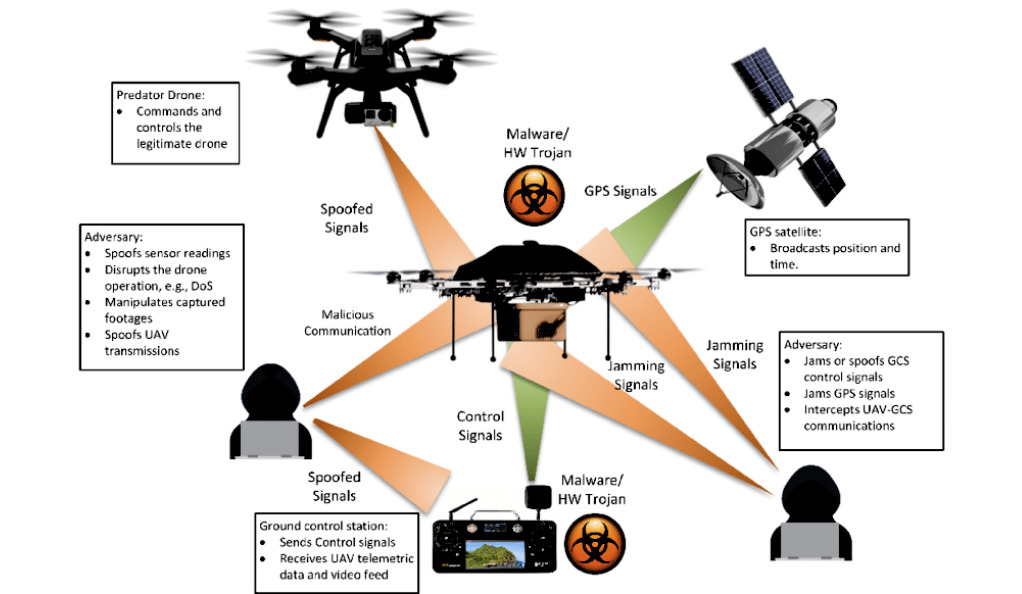
The Importance of Data Encryption
Overview: Just as we encrypt sensitive information on our computers and smartphones, the data collected by drones must also be encrypted. This ensures that even if the data is intercepted or accessed without authorization, it remains unreadable and secure.
Key Points:
- Protection from Breaches: Encryption acts as the first line of defense against unauthorized access.
- Regulatory Compliance: Many industries have strict regulations regarding data protection. Encryption helps drone operators comply with these standards.
- Maintaining Public Trust: Ensuring data security is crucial for maintaining the trust of the public and stakeholders.
Protecting Sensitive Location Data
Drones often capture location-specific data, which can be sensitive, especially in military or critical infrastructure contexts.
Measures:
- Geofencing: This involves creating virtual boundaries that restrict where drones can fly, ensuring they don’t capture data from sensitive areas.
- Data Masking: Even if drones capture sensitive location data, masking techniques can obscure specific details, ensuring only authorized personnel can access the full data.
- On-device Processing: Instead of transmitting raw data, drones can process information on the device and only send essential insights, reducing the risk of sensitive data interception.
Secure Data Transmission
The transmission of data from drones to base stations or cloud storage is a potential vulnerability point.
Safeguards:
- Secure Communication Protocols: Using protocols like SSL/TLS ensures that data transmitted is encrypted and secure.
- Frequency Hopping: This involves drones changing their transmission frequencies at regular intervals, making it difficult for malicious actors to intercept data.
- Two-Factor Authentication: Before data is accessed or downloaded, a two-step verification process ensures only authorized individuals can access the data.
Data Retention and Deletion Policies
Storing drone data indefinitely can pose security risks. It’s essential to have clear policies regarding how long data is retained and the procedures for its secure deletion.
Best Practices:
- Regular Audits: Periodically review stored data and assess if it’s still required.
- Automated Deletion: Set up systems that automatically delete data after a specified period.
- Physical Security: Ensure that data storage facilities, whether cloud-based or on-premises, have robust physical security measures in place.
Training and Awareness
Ensuring data security isn’t just about technological measures. It’s equally crucial to train drone operators and related personnel about the importance of data security and best practices.
Key Aspects:
- Regular Workshops: Conduct workshops to keep the team updated on the latest security threats and countermeasures.
- Simulated Threat Scenarios: Engage in mock drills simulating data breaches to test and improve response protocols.
- Ethical Considerations: Emphasize the ethical obligations of handling and protecting data, especially when it pertains to individual privacy.
Conclusion
In the ever-evolving landscape of technology, security drones have emerged as a transformative force, reshaping the way we approach surveillance and data collection. From their humble beginnings in military applications to their widespread use in various sectors today, drones have proven to be invaluable tools. Their ability to cover vast terrains, offer real-time insights, and integrate with cutting-edge technologies makes them indispensable in today’s fast-paced world.
However, with great power comes great responsibility. As we harness the capabilities of drones, it’s imperative to navigate the regulatory landscape, ensure the security of the data they capture, and remain cognizant of the ethical implications of their use. The future of security drones is undoubtedly promising, but it’s a future that demands awareness, diligence, and a commitment to leveraging these tools in ways that benefit society at large.

